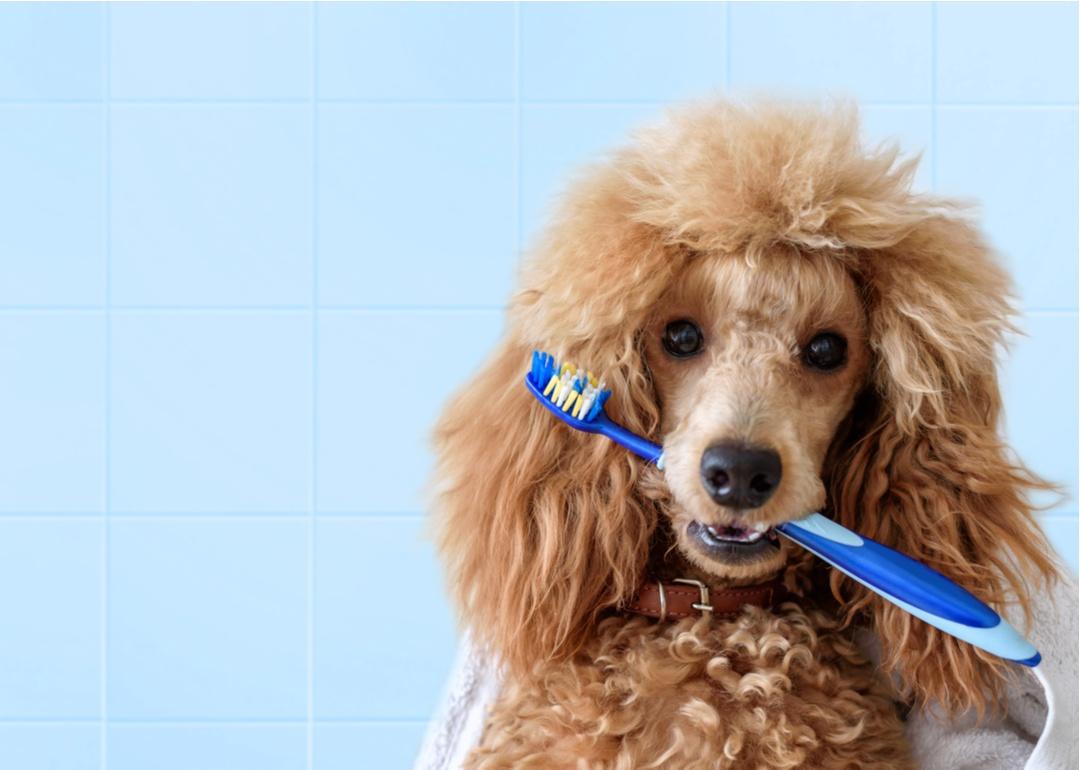
This story originally appeared on Native Pet and was produced and distributed in partnership with Stacker Studio.
5 ways to improve your dog’s oral health
Bad breath can be uncomfortable, even from “man’s best friend.” It’s often a sign of poor oral hygiene for dogs. Pet owners that cares for their dog’s teeth and keeps them on a healthy diet reduces risk of oral diseases like halitosis, gum disease, and tartar in the future.
Native Pet compiled a list of ways to improve and maintain your dog’s oral health. These tips will help keep your furry friend happy and, most importantly, healthy.
Dental care is an essential part of pet care that can be easily forgotten. According to the American Veterinary Dental College, most dogs show signs of canine periodontal disease by age 3. To avoid oral complications like periodontal disease, which has been linked to heart and lung diseases, dog owners need to plan a dental care routine as early as possible.
Oral diseases left untreated can cause tooth loss, painful ulcers, and systemic infections throughout a dog’s body. The first line of defense against conditions developing in a dog’s mouth starts with professional dental cleanings and exams. However, between these dental appointments, an at-home routine is necessary to maintain proper hygiene. The Veterinary Oral Health Council suggests specific products that pet owners can trust to reduce the severity of periodontal disease. These products go through a process of approval and must meet pre-set standards to ensure safe use for pets.
Read on for five strategies to help care for your dog’s oral health.
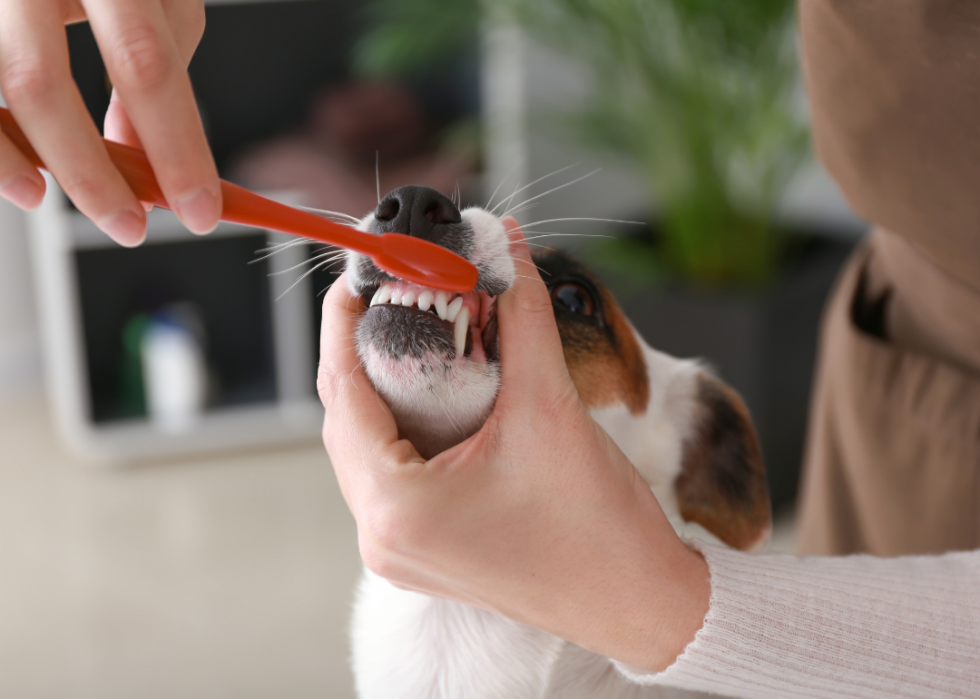
Brushing teeth
An effective way to maintain a dog’s oral hygiene between professional cleanings is brushing. Ideally, dog owners should brush their dog’s teeth every day, but at least three times a week is enough to keep a dog’s mouth healthy. Pet owners who do not brush teeth regularly put dogs at risk for plaque buildup, which leads to bad breath, gum disease, tooth decay, and other painful infections.
Periodontal disease is a common dental condition in dogs. According to a study published in the Journal of the American Veterinary Medical Association, one of the most common diseases reported by veterinarians is an oral disease. Another study published by Today’s Veterinary Practice, suggests 80% of dogs will develop periodontal disease by the age of 2. Preventative measures like regularly brushing a dog’s teeth can reduce the chances.
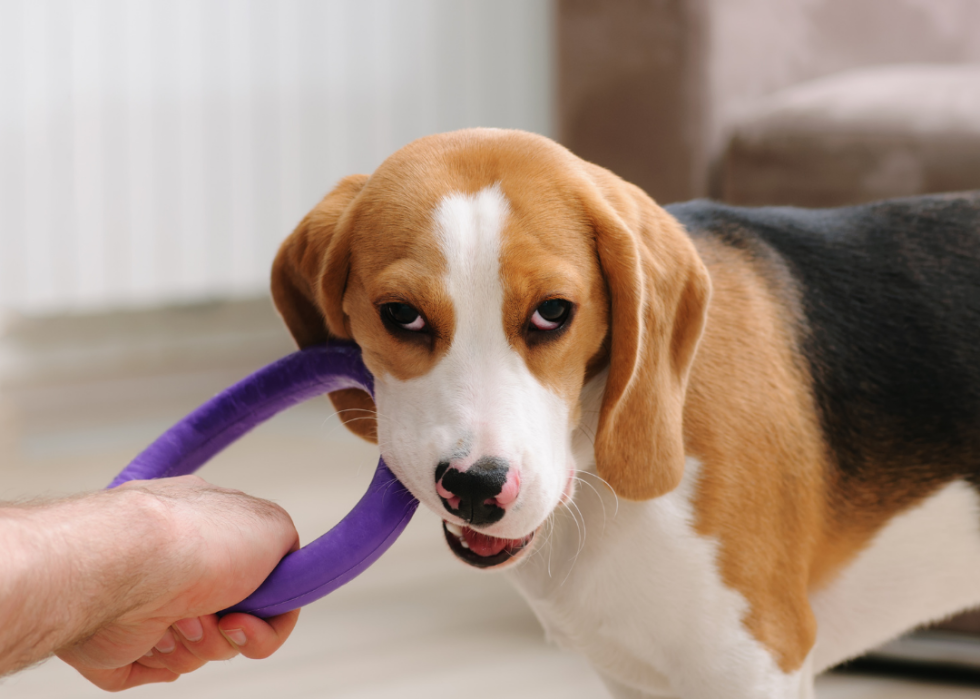
Chew toys
Not only do toys keep a dog active, but they can also improve oral hygiene. Chew toys often have a gritty texture that scratches off plaque residues and prevents tartar accumulation. Toys can also prevent dogs from unwanted destructive chewing behavior, making it less likely that they’ll gnaw on furniture or shoes.
Chew toys like knotted ropes, solid rubber balls, or teething keys are great options. They provide a stimulating workout for your pet’s body and mind. However, safety should be a priority when choosing a chew toy. Picking dog-specific products made in the U.S. is a good practice as well as direct supervision.
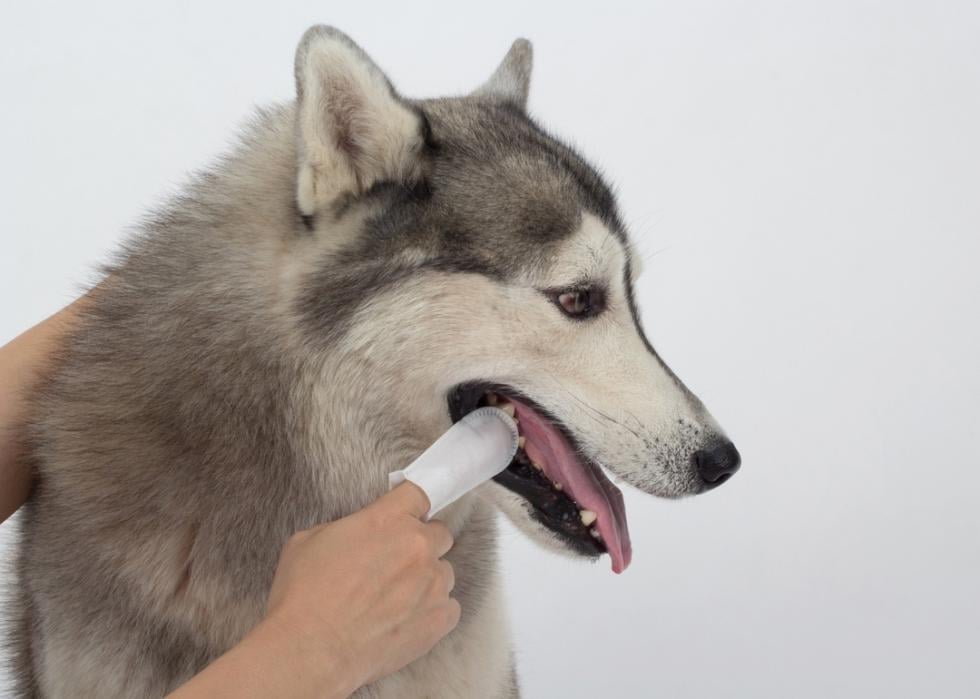
Dental wipes
Dental wipes are a viable alternative to brushing a dog’s teeth. Some dogs don’t enjoy having their teeth brushed, and some will simply not cooperate at all. Dental wipes help remove some biofilms that stick to the dog’s teeth. Although dental wipes are not as effective as a toothbrush, they do help remove what is on the tooth’s surface.
Using the dental wipes twice a day as directed by the manufacturer may help slow the progression of periodontal disease. They also help with dog breath and remove plaque and tartar build-up. This does not substitute the need for annual dental cleaning by a veterinarian.
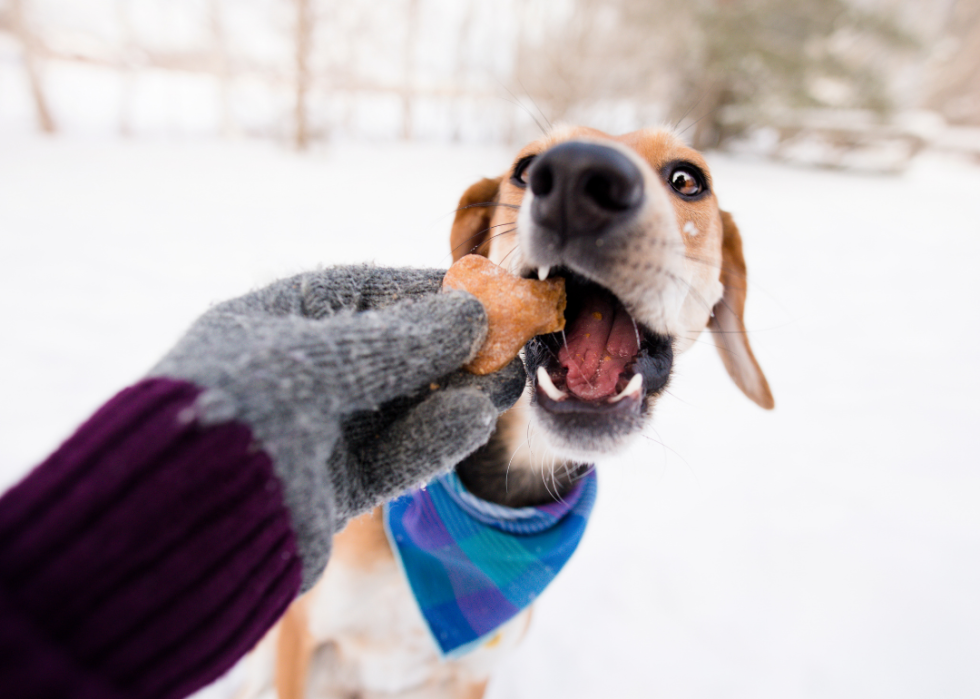
Treats and food
Dog dental treats and food can improve a dog’s oral health. This can be seen in dogs that chew actively because they have less plaque build-up. The mechanical action of chewing can make a difference. In a study published in the Journal of Veterinary Dentistry, increasing the diameter of kibble by 50% reduced tartar by 42%. In the same study, covering the items with polyphosphate reduced tartar by 55%.
The main types of dog dental treats and diets include rawhide, dental chews, bones, and biscuits. While these treats have many benefits, it’s best to avoid hard bones and pigs’ ears. Pigs’ ears are generally a favorite of dogs but they can potentially be contaminated with bacteria.
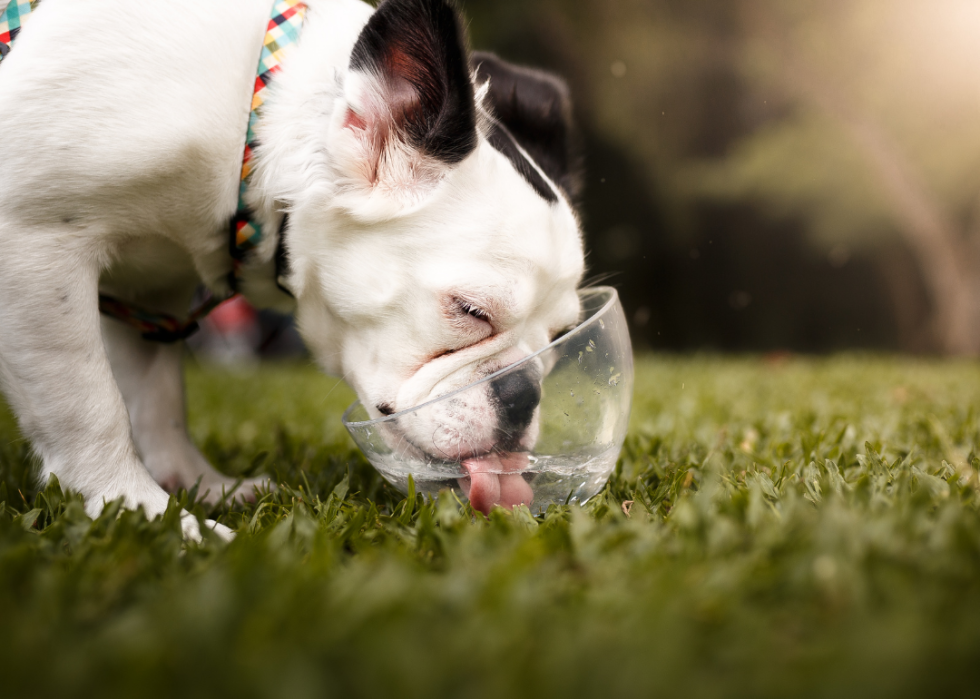
Water additives
A dental water additive is a liquid antiseptic that is safe for a dog to drink. When mixed with water, this product transforms into a brushless oral solution for cleaning a dog’s mouth. These additives contain enzymatic ingredients that break down tartar and get rid of bad breath.
Water additives maintain cleaner teeth and fresher breath, reduce plaque and tartar buildup, and reduce plaque-causing bacteria in a water bowl. However, it’s important for dog owners to pay attention to their dogs’ allergies or sensitive stomachs. Water additives can’t completely replace brushing with a toothbrush or dental cleaning appointments, but they can be a great supplement to a dog’s dental hygiene.



